Why Is Fall the Best Time to Plant Trees?
September 25, 2025
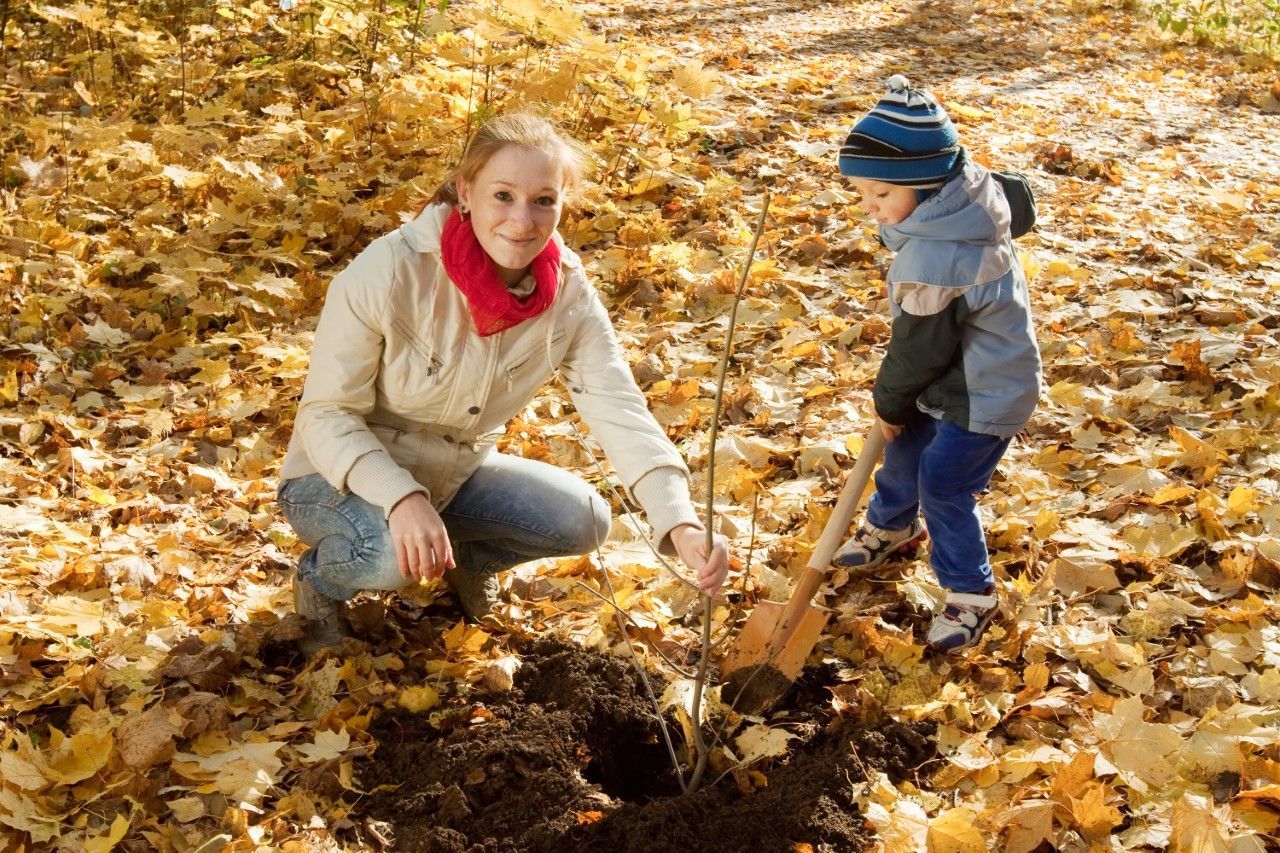
When you think of fall, you probably picture pumpkins on porches, kids running through leaf piles, and that first crisp breath of sweater weather. But for arborists, fall is also one of the most exciting seasons of the year—it’s the perfect time for planting trees.
Planting goes beyond just placing a tree in the ground. It’s about shaping the future of your landscape, community, and local environment. Trees give back in many ways—providing shade on hot summer days, improving air quality by filtering pollutants, and offering homes for beneficial insects and birds. Every time we plant, we contribute something lasting and meaningful to the world around us.
The right tree, in the right spot
One of the biggest mistakes homeowners make is planting a tree without thinking ahead to what it will look like in 10, 15, or even 50 years. It’s easy to fall in love with a small sapling at the nursery and tuck it close to the house for instant curb appeal. But as any seasoned arborist will tell you, that adorable tree won’t stay small forever.
Take the Holly, for example. It’s a classic landscaping choice, but how many times have you seen one planted too close to a home? Fifteen years later, the branches are brushing the siding, the gutters are clogged with leaves, and it needs constant pruning just to keep it under control. It’s a tale as old as time—and one we want to help you avoid.
That’s why placement is key. Choosing the right tree for the right location means considering its mature size, shape, and growth habits. Planting thoughtfully not only protects your home and reduces future maintenance but also allows your tree to thrive with less interference.
Why fall beats spring for planting
Many people assume spring is the best time to plant. After all, it’s the season of new beginnings. But fall has some distinct advantages:
- Cooler temperatures: Lower stress on young trees compared to the heat of summer.
- Warm soil: Roots continue to grow even as air temperatures drop, giving trees a head start before winter dormancy.
- Reduced water demand: With less evaporation, new trees need less frequent watering.
- Fewer pests: Many insect populations taper off in the fall, lowering the risk of early infestations.
In short, fall gives trees the best possible chance to establish strong, healthy root systems before the growing season kicks back in.
Getting your trees off to a healthy start
If you’re considering adding a tree to your yard—or if you’ve already planted recently—working with a Certified Arborist can make all the difference. From selecting the right species to ensuring proper placement and aftercare, our team can help set your trees up for decades of success.
Fall is a season of giving back. What better way to do that than by planting something that will outlast us all, giving shade, shelter, and clean air for generations to come?

When trees grow in tough environments or surpass the space allotted to them, traditional trimming alone isn’t always enough to keep them healthy, safe, and easy to manage. That’s when plant growth regulators (PGRs) come in. These are science-based tools that improve both tree health and operational efficiency. What Are Growth Regulators? Plant growth regulators work by slowing vegetative growth, specifically by inhibiting the hormone responsible for driving cell elongation. Instead of forcing trees to grow faster or fuller, a PGR gently redirects energy toward stability, resilience, and long-term health. It’s not about stopping growth altogether; it’s about managing it intelligently. Longer Trim Cycles, Less Regrowth One of the most significant benefits of using growth regulators is operational: a single application can greatly slow shoot growth for multiple years. This reduction in woody regrowth means: Fewer trims are needed Less vegetation pressure around utility lines Less debris and labor required More predictable maintenance schedules. For utilities and municipalities, this results in cost savings, improved reliability, and more efficient vegetation management programs. Health Benefits Beyond Growth Control While slowing growth is the primary purpose, PGRs come with a suite of additional advantages that improve a tree’s vitality and resilience. 1. Increased Root Density With less energy spent on rapid shoot elongation, trees divert resources below ground. That results in: Stronger anchoring Improved nutrient uptake Better resilience in storms 2. Enhanced Drought and Heat Resistance Trees treated with PGRs often develop: More compact leaves Improved water-use efficiency Enhanced ability to withstand high temperatures This makes growth regulators especially useful for urban trees, which face compacted soils, heat islands, and irregular watering. 3. Greater Tolerance to Insects and Diseases A healthier, less-stressed tree is better equipped to defend itself. PGR use is linked to: Thickened leaf cuticles Balanced energy allocation Reduced susceptibility to certain pests and pathogens A Lifeline for Trees Growing in Poor Conditions Not all trees thrive in the places we plant them. Some are just too large for their site — squeezed between sidewalks, planted under power lines, or struggling in limited soil. Growth regulators can assist by: Controlling canopy size Decreasing structural stress Enhancing overall longevity For trees in stressful environments, PGRs offer a second chance at buying time and improving survival rates where traditional care falls short. Why Growth Regulators Matter Growth regulators aren’t just a maintenance tool. They’re a tree health tool. They help: Maintain safety around utility corridors Reduce trimming frequency and costs Improve tree resilience and root health Support trees in constrained or urban environments Extend the life of valued trees In short, PGRs allow us to work with a tree’s biology rather than against it.

When gardens quiet down and trees go dormant, it’s the perfect time to prepare for spring. Winter, or late winter/early spring before bud break, is ideal for using horticultural oil — often labeled as “dormant oil” — because many pests overwinter on plant bark or in crevices, waiting for warmer weather. Applying oil now allows you to target them before they wake up, helping to prevent widespread infestations later. Applying in winter gives you an advantage: you’ll probably decrease the number of aphids, scale insects, mites, and eggs that appear in spring. The benefit is healthier plants and fewer pests to fight when growth starts again. What Are Horticultural Oils and Why Do They Work? Horticultural oils are highly refined petroleum-based “mineral oils,” typically 92-99% pure, emulsified so they can mix with water and be sprayed. Although many people associate these oils with chemical pesticides, they don’t work chemically; their action is mechanical. A thin layer of oil suffocates pests when it covers them by blocking their breathing tubes (spiracles). In addition: Oil can disrupt insect metabolism or feeding behavior, sometimes serving as a deterrent. For some plants, oil also helps manage surface fungal issues (e.g., early-season fungal problems before leaves emerge). Since oil needs to touch pests or eggs directly to work, thorough coverage of bark, branches, and crevices is crucial. What Winter Oil Protects Against Here are some of the common pests and issues that winter/dormant horticultural oil targets: Soft-bodied insects and mites: e.g., aphids, scale insects, adelgids, spider mites, whiteflies, mealybugs, lace bugs, and certain caterpillars. Overwintering eggs: Many pests lay eggs that survive the winter under bark or in crevices — oil helps eliminate these before they hatch. Early-season fungal problems: For some susceptible plants, horticultural oils can help suppress fungal spores or early mildew before the leaves emerge. Using oil now means fewer pests — and less stress — as plants begin to grow again. Best Practices: How (and When) to Use Winter Oil Safely To maximize benefits and prevent harm to plants, follow these guidelines: Timing matters: For dormant applications, spray before bud break (or as a “delayed dormant” when buds show 1/16"–1/2" green tissue). Avoid applying within 48 hours of a freeze. Apply under appropriate conditions: Avoid spraying when temperatures are very low (below approximately 40 °F, as emulsions can break down) or if they are expected to drop into freezing soon. Also, avoid spraying during extreme heat, high humidity, or drought stress when using summer oils. Thorough coverage is essential: Spray all surfaces such as bark, branches, and crevices where pests might hide or lay eggs. Incomplete coverage can leave pockets of overwintering pests untreated. Spot-test if unsure: Some plant species, especially evergreens or sensitive ornamentals, may react poorly — leaves might scorch, turn yellow, or drop. Do a small trial spray first when treating unfamiliar plants. Plan to reapply as needed: Because oil only works upon contact and evaporates quickly, there is little residual protection. If pests survive or re-infest, additional treatment might be needed. Using horticultural oil during winter or early spring is an effective garden approach. You’re not targeting visible pests or damage; you're addressing the hidden, dormant threats lying in wait. If you want healthier, more resilient plants come spring — with less chemical intervention — a well-timed dormant oil treatment can be one of your best investments. As always with any garden treatment read and follow product labels carefully, consider plant sensitivity, and spray with intention and thoroughness.
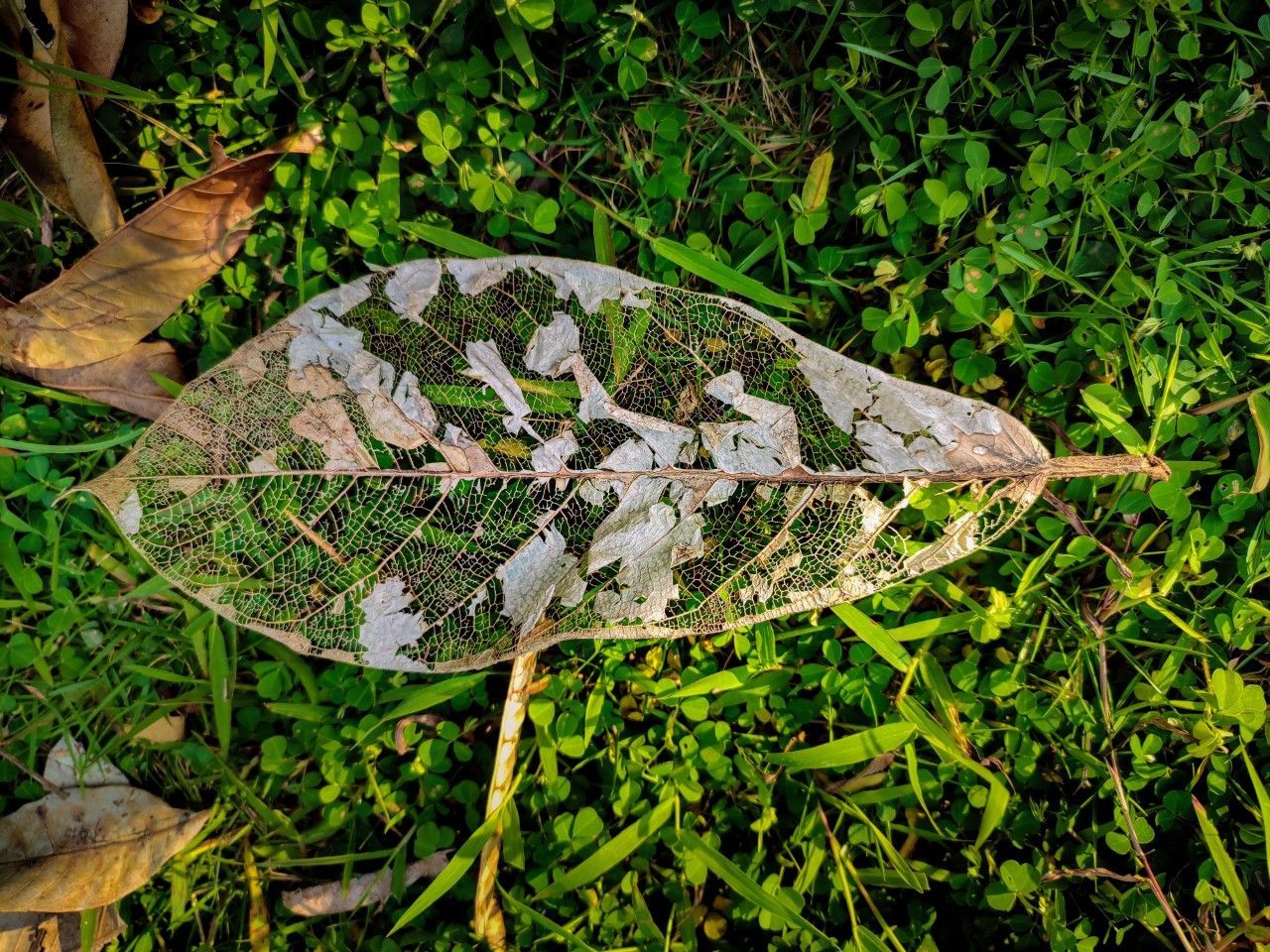
As the leaves begin to change and cooler air sets in, many of us think about cozy sweaters, football games, and pumpkin spice everything. But for trees and shrubs, autumn brings something far less welcome: pests. This season is an active time for insects that can cause serious damage to your landscape if left unchecked. Knowing what to watch for—and when to act—can make all the difference. The Spotted Lanternfly: An unwanted visitor One of the most talked-about threats in Virginia and the Carolinas right now is the Spotted Lanternfly (Lycorma delicatula). This invasive insect has been steadily moving south, and chances are, it’s either already in your area or just around the corner. Why the concern? Lanternflies feed by piercing into the xylem and phloem—the vascular system of trees—and sucking out the sap. This weakens the tree, disrupts its nutrient flow, and leaves it vulnerable to disease. Hardwood species, including beloved maples and oaks, are particularly at risk. The good news is that environmentally friendly control methods are available. From targeted treatments to strategic monitoring, our team can help you create a plan to stop lanternflies before they gain a foothold in your yard. Why fall is prime pest season It’s not just lanternflies causing trouble this time of year. For many other insects, fall represents the final crawler stage of their lifecycle. At this point, pests are mobile, vulnerable, and easier to target. If you act now, you can significantly reduce their population before they overwinter and reemerge stronger next spring. Think of it as breaking the cycle: By addressing pests at each stage of development—egg, crawler, nymph, and adult—you prevent them from multiplying unchecked. Skipping fall treatments often leads to a bigger, more stubborn problem once warm weather returns. Why DIY doesn’t always work It may be tempting to grab a spray from the garden center and call it a day. But pest management isn’t one-size-fits-all. Different insects require different treatments, and applying the wrong solution at the wrong time may do more harm than good—either by stressing your trees or by killing off helpful pollinators. This is where Certified Arborists come in. They’re trained not just in tree care but in pest identification and treatment. An arborist can help you pinpoint exactly what’s affecting your trees and recommend a plan that’s effective, safe, and tailored to your property. Protecting your landscape for the future Your trees are an investment, adding beauty, shade, and value to your home. Protecting them from pests in the fall is one of the smartest steps you can take to ensure they thrive for years to come. So, the next time you’re enjoying crisp autumn air, look around your yard. If you notice unusual insects, sticky residue on leaves, or branches that don’t look quite right, it may be time for a conversation with an expert. Fall pests may be small, but their impact can be mighty—and this season is your best chance to get ahead of them.
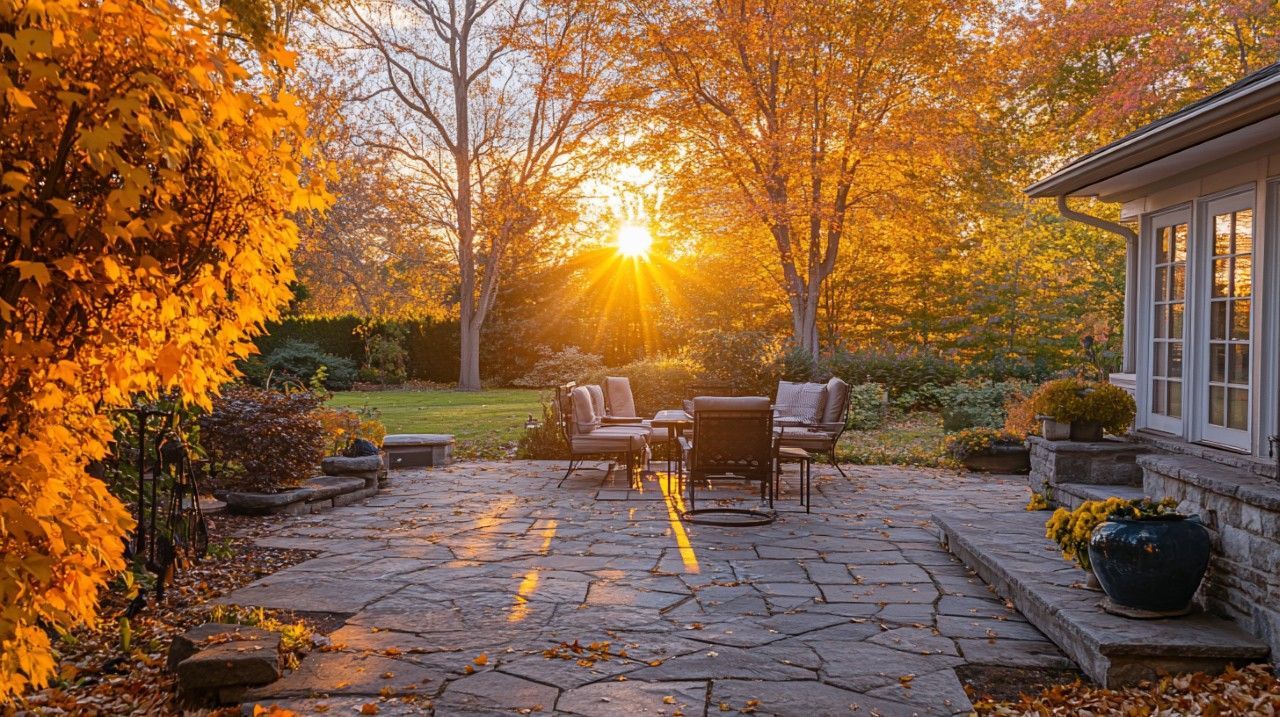
As the seasons change, many homeowners ask: Is fall really the best time to prune my trees and shrubs? The answer is a definite yes—if you do it correctly. Fall pruning can give your trees the structural support they need, keep pests under control, and prepare them for healthy growth in spring. Let’s break it down. Why structural pruning matters Pruning is not just about trimming branches; it’s about shaping the future health of your tree. Think of it like orthodontics for plants: small, precise corrections now can prevent serious problems later. A key concept here is the Branch Collar—that slightly swollen area where a branch joins the trunk. Making cuts back to this natural point helps trees heal better, lowering the risk of long-term damage or decay. Unfortunately, many of the issues we see—dead limbs, weak branch attachments, or disease—can be traced back to improper cuts in the past. That’s why structural pruning requires both knowledge and precision. Fall is one of the best times to address these issues, since cooler weather puts less stress on the tree and allows for more aggressive corrections if needed. Timing is everything So why fall? Simply put, your trees are starting to slow down. With leaves dropping and energy shifting toward the roots, the stress of pruning is minimized. Removing excess growth now won’t send the tree into overdrive the way it might during spring or summer. It’s also easier to see a tree’s true shape once the foliage thins out, which helps arborists make smarter, more strategic cuts. For homeowners, fall pruning is the perfect moment to tackle “bigger jobs”—like reducing canopy size, reshaping a lopsided tree, or addressing crossing branches that may rub and cause wounds. These projects are less risky now than during the height of the growing season. Partner with an arborist While it’s tempting to grab your shears and start cutting, fall pruning is best approached with a plan. Skilled arborists know how to balance health, safety, and aesthetics. They’ll also help you identify pest risks before they become full-blown infestations. The takeaway? Fall is more than just pumpkin spice season—it’s a golden opportunity to invest in your trees’ health. By pruning strategically and addressing pests early, you’ll protect your landscape, enhance curb appeal, and set your trees up for years of strong, healthy growth.
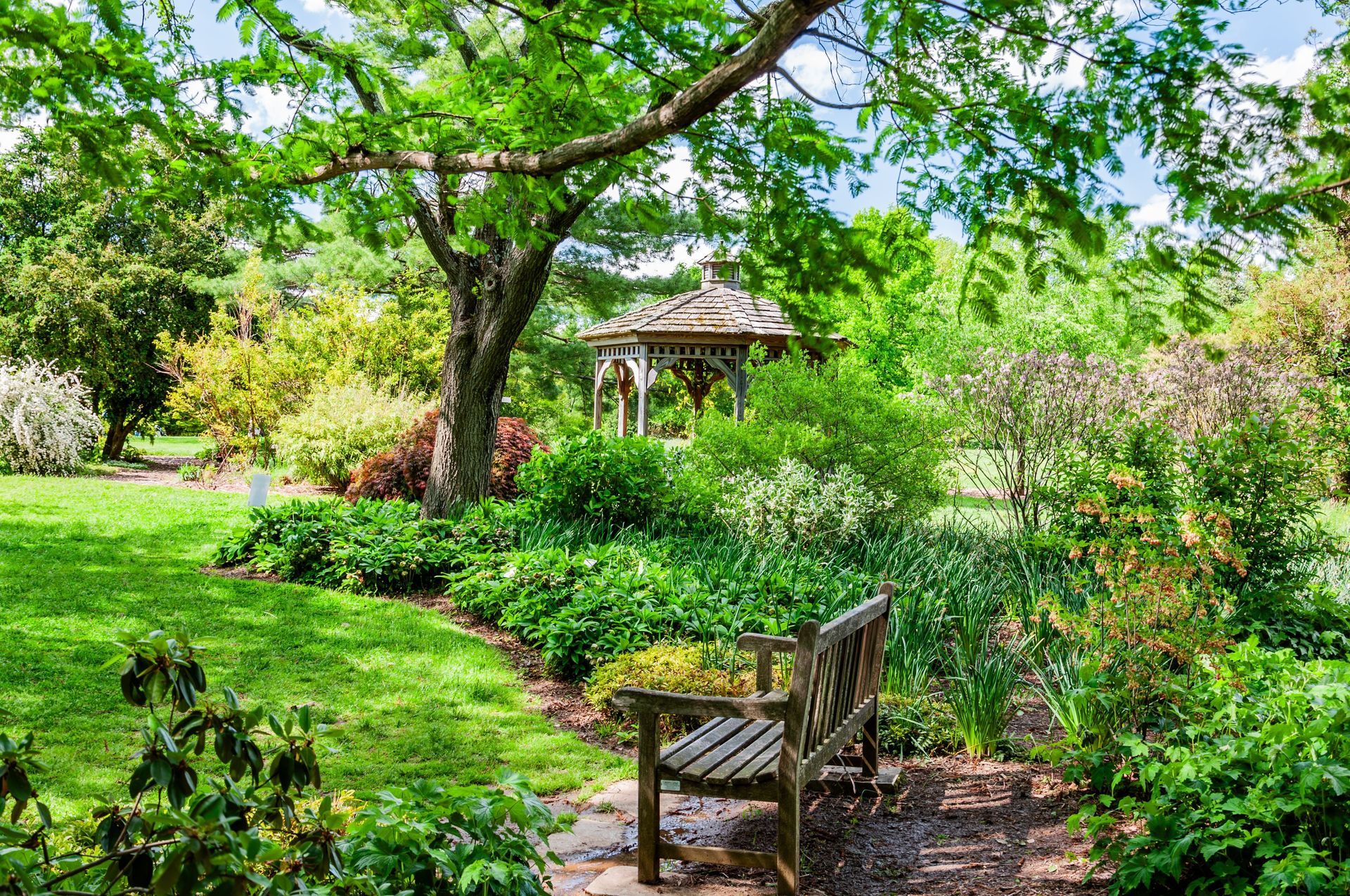
Much like any living thing, trees can get sick. Tree diseases are common, and not all are critical or dangerous for overall health. Still, it's important to watch for signs of disease during the active season. If you're walking around your property on a warm summer day and notice a dark-colored ooze seeping from your tree, this is likely fluxing—a bacterial infection that happens within the outer heartwood and inner sapwood areas. Fluxing isn't always dangerous, but it can sometimes signal a much larger issue beneath the surface. Our Xylem Tree Care certified arborists can diagnose issues like fluxing and many, many more. Like healthcare for humans, our Green Solutions program helps keep your trees healthy. How Green Solutions works Focused on prevention and maintenance, our program allows you to choose individual services as needed or bundle them together and save. Green Solutions provides a customized health plan for your trees and shrubs. Here’s the seasonal breakdown of services: Summer check-in diagnostics: Expert watering advice, pruning, and pest control assessments to ensure your trees stay strong enough to endure summer heat. Fall fertilization: Help your trees recover from summer by replenishing essential nutrients, boosting resilience, and preparing them for winter dormancy. Winter dormant horticultural oil: Applying dormant horticultural oil, the best defense against pests and diseases, keeps your trees healthy all year round. Spring fertilization: Enhance growth with our special blend of nutrients that also strengthen roots and help trees and plants handle summer stress. Root Restore Soil Services Green Solutions can also be paired with our Root Restore treatments—advanced soil care designed to strengthen trees from the ground up: BioAeration – Injects a liquid blend of biological stimulants and biochar into the soil to improve aeration, feed beneficial microbes, and boost tree vitality. Decompact + BioChar – Relieves soil compaction using air tools, then amends with biochar to improve structure, retain water, and create an ideal root environment. These treatments work alongside your seasonal care plan to create healthier, more resilient trees—especially in tough urban or compacted soil conditions. Treatments are more effective when done early. Start your customized tree health program today and give your trees the care they deserve. Call 1-833-544-8733 to learn more. Evaluations are free. Until next time, enjoy a wonderful and safe remainder of your summer!
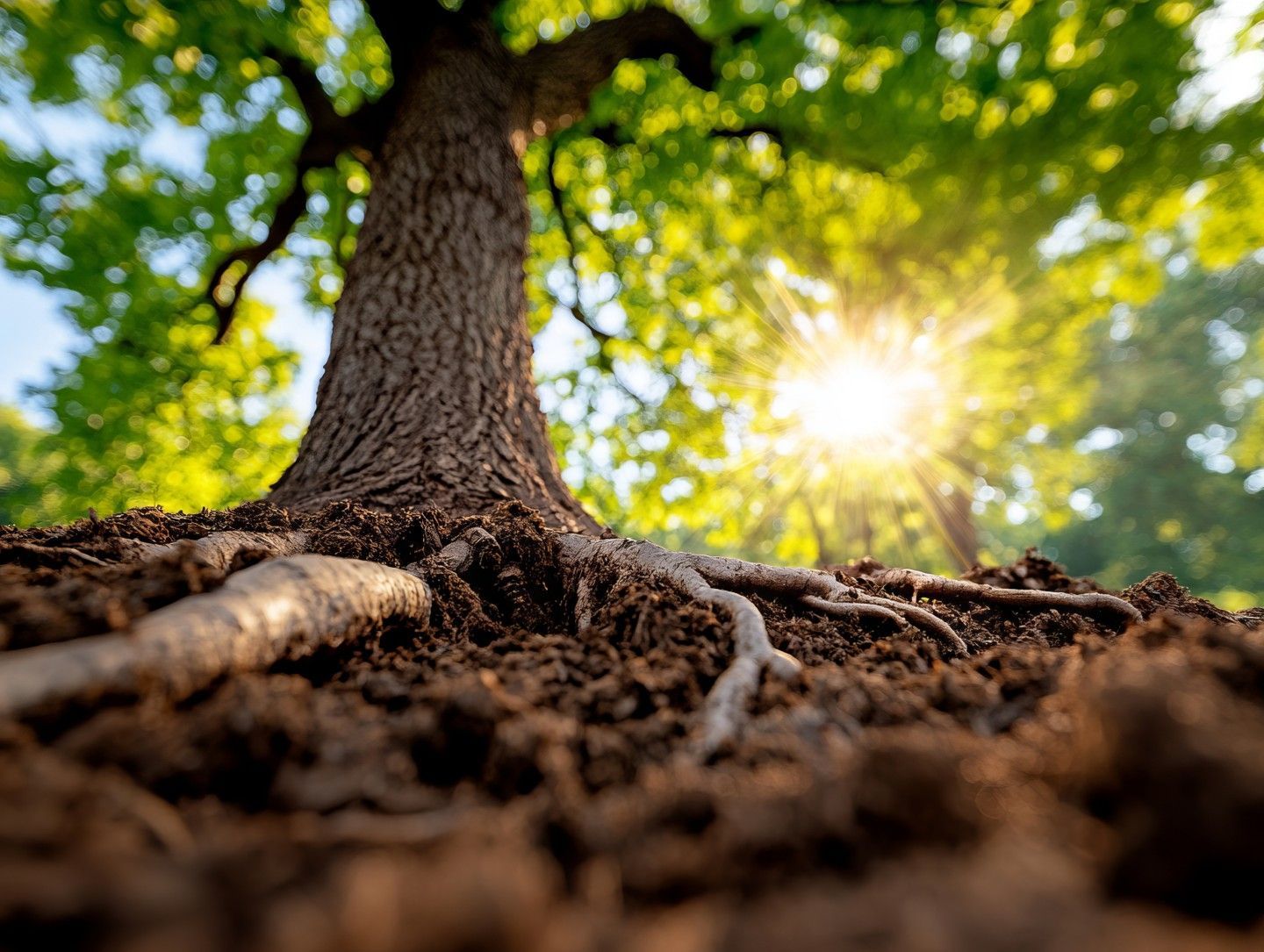
When most people think about tree health, they focus on what they can see above ground: leaves, branches, bark, maybe even the canopy’s shape. But the real story often starts below the surface. In many urban and suburban environments, poor soil quality is one of the most common and overlooked threats to healthy, thriving trees. Why urban soils struggle Unlike the rich, loose soils found in forests and natural settings, urban soils are often heavily compacted and lack the organic material trees need to grow strong. Construction, foot traffic, and even routine lawn care can press the soil tightly together, reducing its ability to absorb water and air. The result? A root system that feels like it’s trying to breathe through a straw. If you’ve ever noticed trees in neighborhoods looking tired, stressed, or less vibrant than those in more natural spaces, compacted soil may be the culprit. A simple DIY test Here’s an easy way to check if your soil might be too compacted: Grab a Phillips-head screwdriver and press it into the ground. Ideally, you should feel little to no resistance for the first six to eight inches below the surface. If the tool stops quickly or takes significant effort to push down, your soil is likely compacted. This compacted soil causes more problems than you might think, especially during rainy periods. Clay-heavy soils, which are common in many urban areas, don’t drain well. Instead of letting excess water pass through, they trap it, leaving roots in standing water. This “drowning” effect causes stress that affects the entire tree, from root to canopy. Why it matters for your trees Roots are the lifeline of your trees. When they’re stressed from poor drainage, compacted soil, or a lack of nutrients, the tree struggles to take in what it needs. You may notice signs like yellowing leaves, slow growth, or branches dying back. Left unchecked, these issues don’t just affect your tree’s appearance, they can threaten its long-term health and stability. Ask yourself this question: Would you simply ignore the foundation of your house? For your trees, the soil is that foundation. What you can do right now While certain soil treatments—such as decompaction services—are best performed in specific seasons, there are still steps you can take today to support your trees: Mulch wisely: A layer of organic mulch around the base of your tree (but not touching the trunk) helps retain moisture, regulate soil temperature, and add organic material as it breaks down. Watch your watering: Avoid overwatering, especially in areas with poor drainage. Slow, deep watering encourages roots to grow deeper rather than staying near the surface. Reduce foot traffic: Try to limit heavy use around the base of trees, as repeated pressure compacts soil even further. When to call the experts Sometimes, the best thing you can do for your trees is get a professional opinion. A Certified Arborist can evaluate your soil conditions, check for signs of stress, and recommend a treatment plan tailored to your property. Whether it’s planning future decompaction services, improving drainage, or adjusting your care routine, the right approach can make a world of difference. Healthy soil means healthy trees, which in turn create a more beautiful, resilient landscape for you to enjoy.
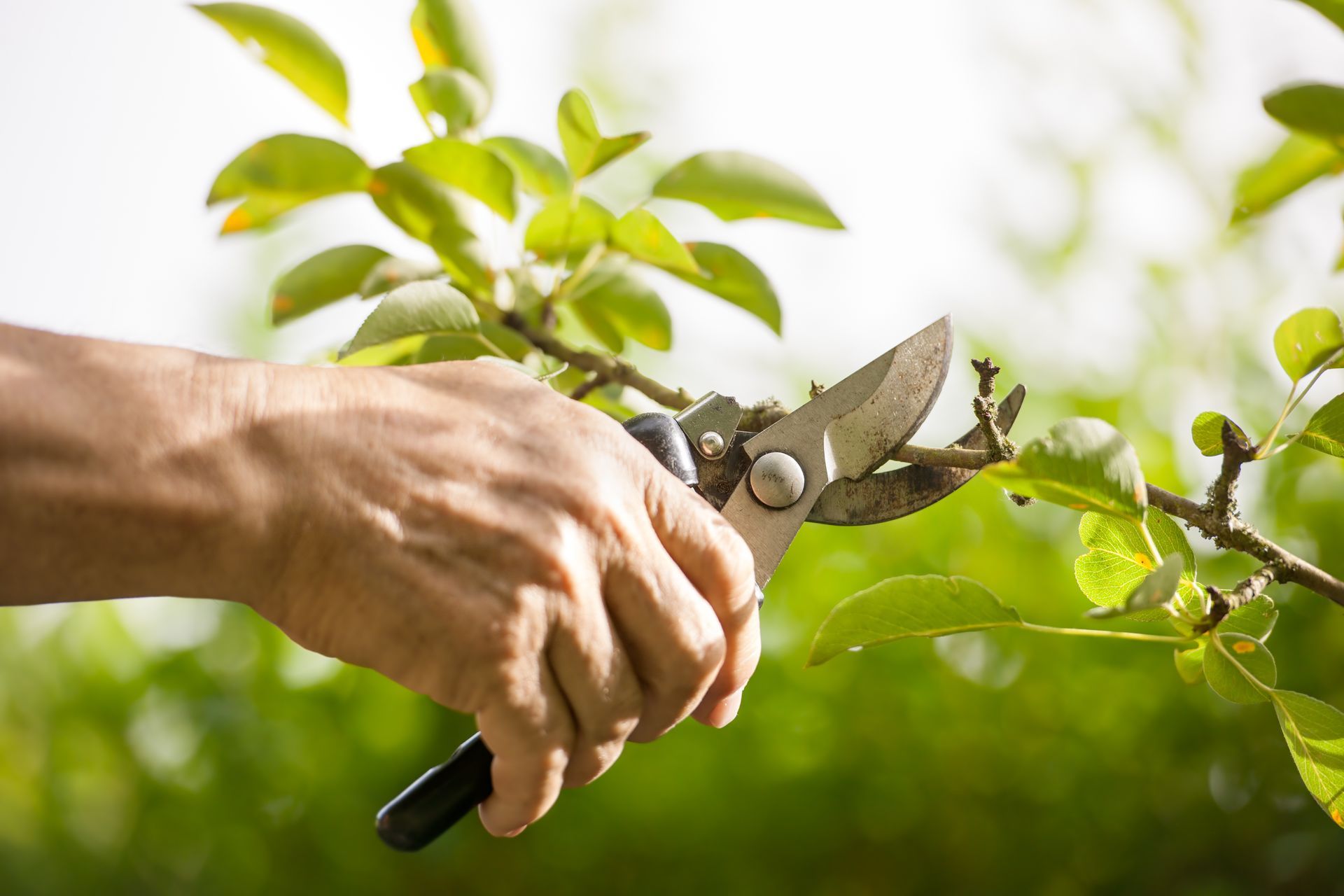
When it comes to tree care, timing is everything. Many homeowners wonder if summer is a safe time to prune, or if it’s better to wait until the dormant season. The truth might surprise you: With the right approach, summer can be a great time to give your trees the attention they need. Why pruning matters Pruning isn’t just about shaping a tree to look nice (though that’s a welcome bonus). It plays a critical role in keeping your trees healthy and your property safe. By removing weak, crossing, or damaged branches, pruning helps reduce the risk of large limbs breaking off, especially during those sudden, windy afternoon thunderstorms we often get this time of year. Beyond safety, proper pruning also helps prevent large wounds that trees may struggle to heal, supports balanced growth, and allows more sunlight and airflow to reach the interior branches. In short, it’s one of the best investments you can make for the long-term health of your trees. Summer Pruning: The do’s and don’ts As we already mentioned, you may have heard that pruning should only be done in winter when trees are dormant. While dormant-season pruning has its benefits, summer pruning is not only acceptable but also beneficial—as long as it’s done thoughtfully. The key is moderation. Arborists often refer to “dosage” when discussing pruning, meaning the amount of live growth removed. In summer, keeping the dosage reasonable is crucial. Too much removal can stress the tree, while careful, selective cuts can strengthen its structure and reduce risks. Think of summer pruning like a tune-up rather than a major overhaul. Signs your trees may need summer pruning Not sure if your trees could benefit from a mid-season trim? Here are a few signs to look for: Overhanging branches: Limbs that stretch too close to your roof, driveway, or power lines. Dead or damaged wood: Branches that look brittle, cracked, or lifeless. Crossing branches: Limbs that rub against each other, creating weak spots. Storm hazards: Large, heavy limbs that could break during high winds. If you notice any of these, your trees may benefit from some selective pruning now instead of waiting. The Big Picture: Prevention is key As the old saying goes, “An ounce of prevention is worth a pound of cure.” When it comes to trees, a little preventive pruning today can save you from dealing with storm damage, costly repairs, or even tree removal down the road. Pruning helps reduce risks not just to the tree, but also to the people and property around it. Remember, pruning isn’t a one-size-fits-all job. Every tree has its own needs, depending on its species, age, and environment. Why a professional evaluation helps Before reaching for the pruning saw, it’s wise to start with a professional evaluation. A Certified Arborist can assess whether your trees actually need pruning right now, identify any hidden risks, and recommend the best approach for both safety and tree health. Sometimes, the right call might be a minor trim. Others a more targeted structural prune may be in order. By partnering with a professional, you’ll ensure your trees get the care they need, without the risk of over-pruning.






